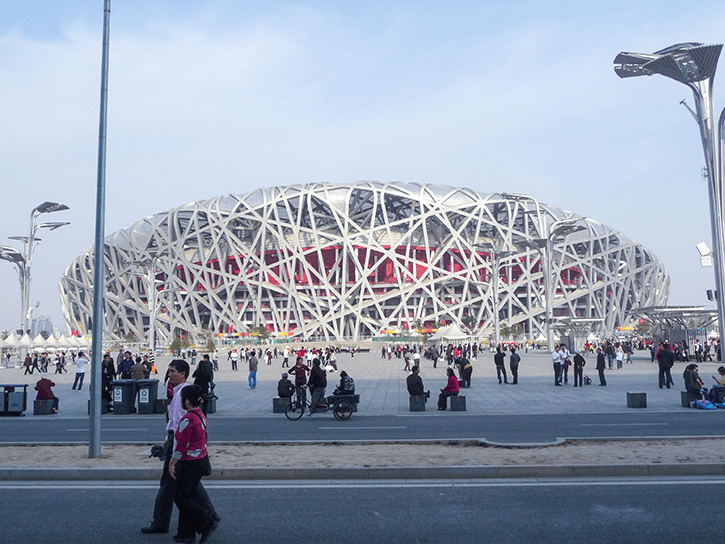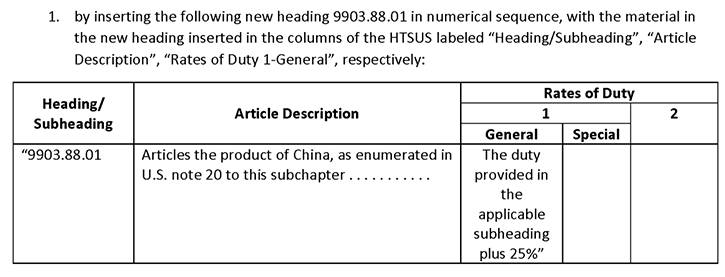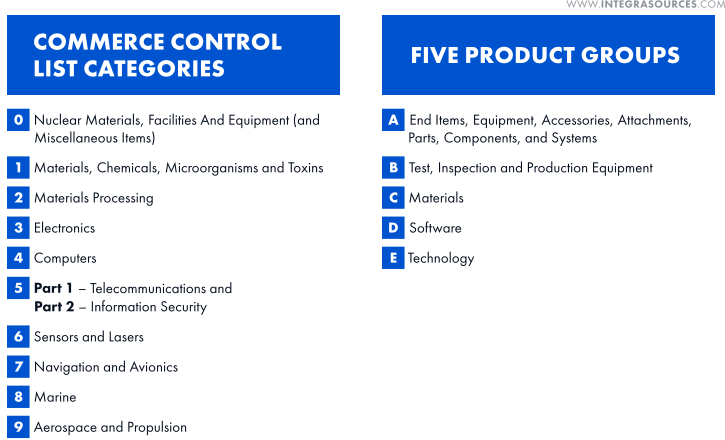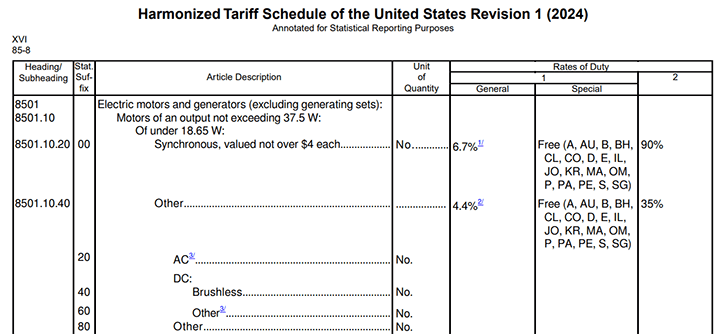Best Countries for Contract Electronics Manufacturing, Part 1: China, Taiwan, the USA, and Mexico
In our previous post, we discussed the pros and cons of outsourcing electronics production to third countries and how to prepare for mass manufacturing. We also briefly mentioned some of the most attractive countries for electronics production. In this article, we would like to take a closer look at these locations, particularly China, Taiwan, the United States, and Mexico. You can read about other locations in the second part of this post.
As an embedded electronics design company, we take someone else’s ideas, study them, and create new solutions. If you have a concept of a device or software, contact Integra Sources to turn it into a real product. However, after the product is tested, your next move is to organize mass manufacturing. In this post, we are going to take a closer look at the following locations, study their pros and cons and their export regulations, and mention some of the top local EMS providers.
China

Since China remains the world’s largest electronics powerhouse, it totally makes sense to consider it your number one option.
Benefits
Low production costs
China’s electronics manufacturing was initially boosted by very cheap labor. It motivated many companies to move their manufacturing to this country a few decades ago. By now, the country’s cost of labor has risen and is closer to the middle of the spectrum. Nevertheless, according to salaryexplorer.com, factory and manufacturing average salaries in China remain about two times lower than in the U.S. – $2,840 against $5,508.
Another factor influencing the production cost in China is the country’s low power rates for enterprises – $0.09 per kilowatt-hour as of June 2023, according to GlobalPetrolPrices. Compare it to the rates in the U.S. ($0.147).
Developed infrastructure and cheap resources
China has an extensive railway and port network, roads, and airports, and the government continues to invest in the infrastructure. Also, manufacturers in China hold the advantage of sourcing local active and passive components, rare-earth metals, acids, solvents, copper, tin, gold, and more.
Output capacity
Factories in developed countries often have limited capacity, while Chinese manufacturers can almost always find the staff for your order and easily scale up the production.
Big domestic market
China’s electronics manufacturing enterprises have easy access to the country’s huge market, with millions of potential buyers. So, unless you are targeting purely your local market, you should definitely take this possibility into account.
Challenges
- Quality/reputational issues
Many people are used to seeing Chinese goods as trash that won’t last long. Although nowadays, many factories in China manufacture products of decent quality, one should still consider whether the “Made in China” label can prejudice potential buyers against the product.
- Intellectual property protection
Chinese manufacturers are notorious for copying customers’ designs. That’s why one needs to develop protection against reverse engineering. As for your custom firmware, we recommend using test firmware during production because it does not contain any business logic. Lastly, different parts of the device can be manufactured at different locations, but this will complicate the logistics.
- Complex logistics
When a product is shipped from China to Europe or North America, its landed cost is usually cheaper than that of domestic goods. But delivery may take up to several months, while delays will prove costlier.
- Minimum orders
Large Chinese factories are interested in high-volume orders and may refuse to take small-batch orders. On the other hand, there are always small factories that will gladly cooperate.
- Export to the U.S.
Those who want to produce electronics in China but sell them in the U.S. must take into account the Section 301 China Tariffs implemented in 2018. These tariffs apply to a huge list of products, including electronic appliances. So, if your product falls within one of the four lists of the China Section 301-Tariff Actions, you will have to pay the standard import duty plus an additional 25%.

Note, however, that in December 2023, the United States Trade Representative (USTR) extended over 400 exclusions exempt from additional duties. These exclusions are scheduled to expire on May 31, 2024, but will probably be extended further. Also, note that doing business with certain Chinese companies may require a license if these companies are listed in the Bureau of Industry and Security’s Entity List.
The United States and China’s sanctions against each other and the growing political tension between the two countries make manufacturing electronics in China riskier than it used to be. Despite that, many U.S. companies still prefer manufacturing goods in China, as the pros outweigh the cons.
Some of the Top EMS Providers in China:
BYD Electronics
NextPCB
Agile Circuit
PCBgogo
Topscom
Luxshare Precision Industry Co.
UETPCB
Global PCB
PCBMay
Suntek Electronics
Export Regulations in China
China’s Export Control Law (ECL) prohibits or restricts the export of such goods as nuclear products, military items, and dual-use products: chemicals, nuclear goods, encryption items, biological products, and missile-related goods.
Besides the ECL, exporters must comply with other export-related regulations, particularly with the Export Prohibited and Restricted Technology Catalog. This document lists items whose export is prohibited or is subject to license management. Technologies not mentioned in the Catalog are deemed as free export, but such items still require the completion of contractual registration procedures on a designated website.
Some technologies in the list are:
Telemetry coding and encryption software or hardware
Artificial intelligence
Cryptography and security tech
Advanced defense tech
The list is updated every year.
Note that in 2020, China issued the Unreliable Entity List Regulations (UEL Regulations). The document lists enterprises, organizations, and individuals prohibited from export/import operations with Chinese businesses. The UEL regime is independent of the ECL and applies separately.
As embedded electronics developers, we often order prototypes of our devices from Chinese factories, and we are quite satisfied with the quality of their work. If you choose to start your project with Integra Sources, we can also recommend a factory for mass manufacturing.
Taiwan

Benefits
Expertise and quality
Taiwan’s electronics manufacturing industry emerged 20 years ahead of China’s and has been dominating the market in terms of the quality of local semiconductors and devices. No wonder it remains one of the top IT outsourcing countries. Such brands as Acer, Asus, and HTC come from Taiwan. It is also home to the famous TSMC. The country has a highly skilled workforce and high robot density, which results in a decent labor productivity indicator ($57 per hour worked). All this makes Taiwan a reliable location for both manufacturing and developing advanced electronics.
Intellectual property protection
The country has strict IP laws and a long history of collaborating with foreign customers. Local manufacturers are trusted by such companies as HP, Siemens, Apple, NVIDIA, Intel, and others.
Advanced infrastructure
As of 2023, Taiwan takes the 13th position in the World Bank’s Connecting to Compete 2023 Report with an LPI score of 3.9.
Challenges
- Higher production costs
Although manufacturing goods in Taiwan is cheaper than in Western countries, it is still generally more expensive than outsourcing to other Asian countries.
- Not suitable for large-scale production
Taiwan’s electronics manufacturing industry has a limited number of facilities. As a result, it is more suitable for small-scale manufacturing of advanced electronics or machinery rather than for large-scale production of simple consumer-grade products.
- Geopolitical uncertainty
With the tensions between mainland China, Taiwan, and the U.S. on the rise, it is unclear what to expect in the near future and how the conflict will change the market.
Some of the Top EMS Providers in Taiwan:
HonHai Precision (Foxconn)
3CEMS Group
Tripod
AGP ELECTRONIC INC.
3AE Electronics Co., Ltd.
ADLINK Technology, Inc.
ZD Tech
Pegatron
Unimicron
Compeq
Export Regulations in Taiwan
Under Taiwan’s Foreign Trade Act, most goods are generally allowed to be freely exported and imported. However, the export of certain strategic high-tech commodities (SHTC) is either prohibited or requires an export license.
Taiwan currently maintains the following export control lists:
The European Union’s Export Control List for Dual-Use Items and Technology and the Common Military List prohibit or restrict the export of nuclear technologies, information security systems, some industrial equipment, and more.
The Sensitive Commodities List (SCL) controls exports to North Korea.
The SCL controls exports to Iran.
The SCL controls exports to Russia and Belarus.
If you want to rely on Taiwan’s electronics manufacturing companies, make sure to study these and other related laws here.
Any product that falls within one of these lists is considered an SHTC item. Non-listed products may still be deemed SHTCs if their end-users are suspected of developing nuclear, chemical, or biochemical weapons, missiles, or other weapons of mass destruction. If you’re not sure whether your product falls within one of these types of SHTCs, you should request the Industrial Technology Research Institute (ITRI) for an SHTC assessment by submitting a completed Strategic High-Tech Commodities Application Form.
Also, Taiwan’s authorities do not allow the export of SHTCs to entities listed in the SHTC Entity List.
The United States

Benefits
- High labor productivity and quality
When outsourcing electronics production to America, one benefits from high labor productivity ($70 per hour worked). USA electronics production features cutting-edge technologies, automation, highly-skilled professionals, and strict quality assurance, which makes the country fit for manufacturing complex electronics, especially in highly regulated industries: aerospace, aviation, healthcare, etc.
- Public perception
Goods manufactured in the U.S. are generally perceived as high-quality around the globe. Moreover, almost two-thirds of Americans prefer domestic products over foreign goods, although they are unwilling to pay more than 10% extra for them.
- Intellectual property protection
Due to strict laws and reliable IP enforcement, there’s less risk that an American contract manufacturer will steal your design without consequences.
Challenges
- High labor costs
America has one of the highest factory and manufacturing average salaries in the world ($5,508), which makes USA electronics manufacturing very expensive. Consequently, you may find it difficult to compete against goods produced in countries with cheaper labor costs.
- High taxes
American corporate tax rates are among the highest in the world, not to mention the complexity of the local tax system.
- Old infrastructure
In the 2021 Report Card for America’s Infrastructure published by the American Society of Civil Engineers, the country earned a “C-”. The nation needs to invest about $6 trillion by 2031 to make the necessary improvements.
- Logistics issues
If you want to sell the product not only in North America but also in Europe, the Middle East, Asia, and other regions, then you will have to add shipping costs to the final price.
Some of the Top EMS Providers in the USA:
Avanti Circuits
ACT (USA) International LLC.
TechnoTronix EMS
Advanced Circuitry International
Imagineering, Inc.
PCB Power
Sunstone Circuits
Bay Area Circuits
Twisted Traces
RUSH PCB, Inc.
Export regulations in the United States
Here are the key laws regulating the export of goods from the U.S. International Traffic in Arms Regulations (ITAR) controls the export of weapons, military items, military services, and military-related data. The Export Administration Regulations (EAR) control the export of technology, technical data, as well as designs, models, instructions, manuals, formulae, and other information required for the development, production, or use of a product. The Commerce Control List (CCL) lists specific products that require an export license. The CCL is divided into 10 categories, which are further subdivided into five groups.

As you can see, the list contains a range of electronic products, including computers, sensors, and telecommunication equipment.
If an item is not on the list, it is designated as EAR99 and does not require an export license – unless it is going to an embargoed country. These are mostly low-tech consumer products.
The Bureau of Industry and Security also imposes specific license requirements for the export of certain goods to certain businesses, research institutions, organizations, and individuals. This so-called Entity List can be found in Supplement No. 4 to Part 744 of the Export Administration Regulations.
Mexico

Benefits
- Fast-growing hub
With over 730 plants manufacturing ICs, computer memory and CPU chips, audio and video devices, and other electronics, Mexico’s electronics production industry has great export potential. Local EMS providers offer services to Foxconn, Toshiba, Samsung, LG, and Intel. The country can also boast a relatively skillful workforce.
- Low labor costs
Mexico is one of the cheapest countries in terms of manufacturing workers’ average salaries. However, energy costs in Mexico are higher than in the U.S. ($0.215 vs. $0.147 per kilowatt-hour). So, the overall production may not be as affordable as one would expect.
- Proximity to the United States
One of the greatest benefits of manufacturing electronics in Mexico is its proximity to the U.S. and Canada, two large potential markets. Shipping goods to these countries from Mexico should be easier than transporting them from East Europe or Asia.
- Zero import rates
Mexico is a participant in the United States-Mexico-Canada Agreement (USMCA) that introduces special duties for goods imported to the U.S. from Mexico. Such goods are marked with ‘S’ in the Harmonized Tariff Schedule of the United States (see Column 1 Special). Most of these goods can cross the border for free.

Challenges
- For North America only
Unless you target North America, Mexico can offer no benefits compared to other attractive locations. The cost of shipping from Mexico to other regions isn’t much different than transporting goods from China.
- Costlier BOM
Mexico’s electronics production enterprises have to import components from China, so the bill of materials for your device may become more expensive due to shipping and tariff costs. On the other hand, fast shipping time usually leads to less stock and, therefore, less warehouse space is required, which may make the final price of the product acceptable despite higher BOM cost.
- Goods must be made in Mexico
The USMCA trade agreement and free import duties only apply to originating goods, i.e., products produced entirely in the territory of a USMCA country or whose regional content value is less than 60% (if the transaction value method is used) or less than 50% (if the net cost method is applied). So, if the product cannot be proven to originate from Mexico, regular import taxes will be applied.
Some of the Top EMS Providers in Mexico:
Many of them are international corporations with facilities in different countries.
Kimball Electronics Mexico
RayMing PCB & Assembly
Lanix
AsteelFlash Group
K&S Advanced Systems
Benchmark Tijuana
SigmaTron International
Jabil Circuit Mexico
Circuitec Company
Zollner Electronics
Export Regulations in Mexico
The Secretariat of Economy (SE) governs the export of conventional arms and dual‑use goods and technologies under the Wassenaar Arrangement in accordance with the Official Journal of the Federation on June 16, 2011, and subsequent amendments.
The regulation controls dual‑use software and technology, nuclear, chemical, and related technology equipment, materials, and software. Annex I of the regulation restricts the export of the following categories of dual-use items:
Special materials and related equipment
Processed materials
Electronics
Computers
Telecommunications and information security
Sensors and lasers
Navigation and avionics
Marine
Aerospace and propulsion
The exporter must obtain a prior permit before shipping these goods to another country. However, the regulation contains exceptions for goods shipped by Mexican companies to the U.S. or Canada.
Note that Mexico bans the export of certain goods to Afghanistan, the Central African Republic, Congo, Eritrea, Iraq, Iran, Lebanon, Libya, North Korea, Somalia, Sudan, and Yemen.
Conclusion
Top IT outsourcing countries for electronics production are located in Asia. China’s electronics manufacturing industry offers relatively low production costs, developed infrastructure, and easy access to local raw resources and components. Another attractive location is Taiwan, which offers expert facilities with a skilled and experienced workforce.
In North America, one should also consider the United States. However, although USA electronics manufacturing offers excellent quality control or reputational value, the production cost here may outweigh these benefits. Those targeting the North American market may find Mexico a much cheaper alternative located close to the U.S. and Canada.
If you need to develop your product first, our team would be glad to help you out. We are experts in designing embedded devices, power electronics, robotics, and embedded software. Contact Integra Sources to discuss your project. Make sure to read Part 2 of this post dedicated to Malaysia, Thailand, Vietnam, and India.

